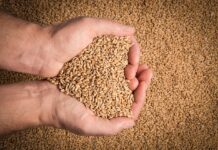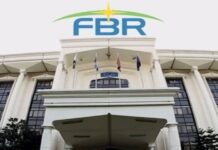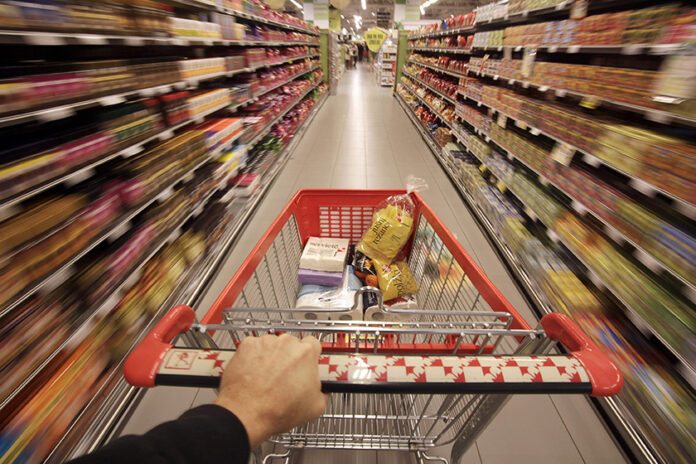The Pakistan Bureau of Statistics (PBS) reported that the Consumer Price Index (CPI) for October decelerated to 26.9%, a ten-month low since December 2022, which strengthened the central bank’s stance during talks with the International Monetary Fund (IMF) against potential demands of raising interest rates.
The inflation rate declined primarily due to a drop in food inflation to a 16-month low of 26.9%, compared to the previous month’s 31.4%. The government cut the fuel prices last month, which also helped the pace of inflation to slow down in rural and urban centers while the deceleration was witnessed across food and non-food categories.
The core inflation, which is calculated after excluding the volatile energy and food prices, also slowed down in October to 18.5% in urban areas and 26.7% in rural areas — far above the central bank’s interest rate.
Key food items such as wheat flour, spices, tea, and rice have all seen substantial price hikes over the past several months. Wheat flour prices increased by up to 64%, while spices and tea prices surged by 85% and 55%, respectively. Rice, another essential food item, saw prices increase by almost two-thirds.
As per PBS data, on a month-on-month basis, onions price increased by 38.7%, fresh vegetables 17.7%, fresh fruits 6.5%, eggs 6%, potatoes 3.7%, fish 3%, condiments and spices 2.87%, beans 1.5%, and nimco 1.4% over the previous month.
However, sugar price got reduced by 10.2%, gram pulse by 3.7%, tomatoes 3.1%, mustard oil by 2.3%, moong pulse by 2.1%, gur by 1.9%, wheat flour by 1.9%, fresh milk, tea, and wheat price reduced by 1.7% each. Similarly, vegetable ghee, besan, and masoor pulse prices are down by 1.6% each. Cooking oil prices were also reduced by 1.5% over the previous month.
Motor fuel prices were also reduced by 4%, transport services by 1.6%, and construction input items prices down by a percent over the previous month.
Year-on-year comparisons revealed substantial price increases for condiments and spices, sugar, gur, wheat flour, rice, beans, and tea. In contrast, tomato prices decreased significantly, along with onions and fresh vegetables.
Prices of condiments and spices increased 85%, sugar 70%, gur 65, wheat flour 63%, rice 62%, beans 57%, tea 55%, beverages 46%, wheat products 43%, dry fruits 42%, dessert preparation 42%, potatoes 41%, mash pulse 40%, wheat 38%, and milk powder were costlier by 37% over the last year.
However, tomato prices reduced 46%, onions 17%, fresh vegetables 11%, and gram pulse by 3.4%. Likewise, among the non-food items, on a yearly basis, textbooks were costlier by 95%, gas charges 63%, electricity charges 51%, washing soap/detergents/matchbox 48%, stationery 47%, communication apparatus 40%, household equipment 37%, marriage hall charges 37%, drugs and medicines 37%, newspapers 34%, personal effects 33%, accommodation services 32%, motor fuel 31%, motor vehicle accessories 28%, and solid fuel cost increased by 27%.
July-October period
Data for the July-October period of the current fiscal year revealed that the average inflation rate stood at 28.5%, well above the official target of 21% for the year. In rural areas, the average inflation rate was even higher, at 31.2%, compared to 26.6% in urban areas.
In the non-food category, electricity charges and gas charges rose significantly by more than 50% and 63%, respectively. The inflation rate for the transport consumer price group was 39% up due to constant increases in fuel prices in the past few months.
Notably, in May 2023, inflation was at its record peak of 38%. Since November 2021, inflation remained persistently elevated and in double-digit territory.
Recently, the Ministry of Finance projected an inflation rate slowdown ranging from 27% to 29% in October. However, it is expected that the government and the State Bank of Pakistan (SBP) may not meet their annual inflation target of 21%, despite maintaining high interest rates at 22%, which has imposed significant costs on the national treasury and businesses.

























